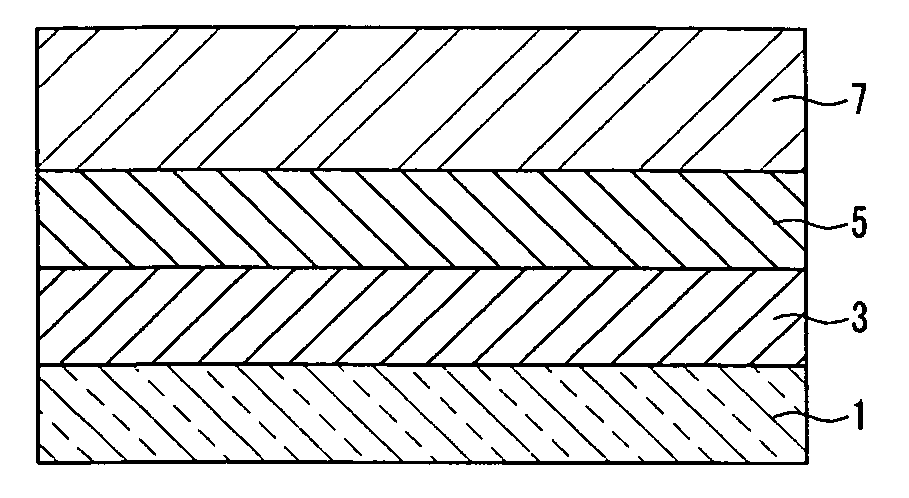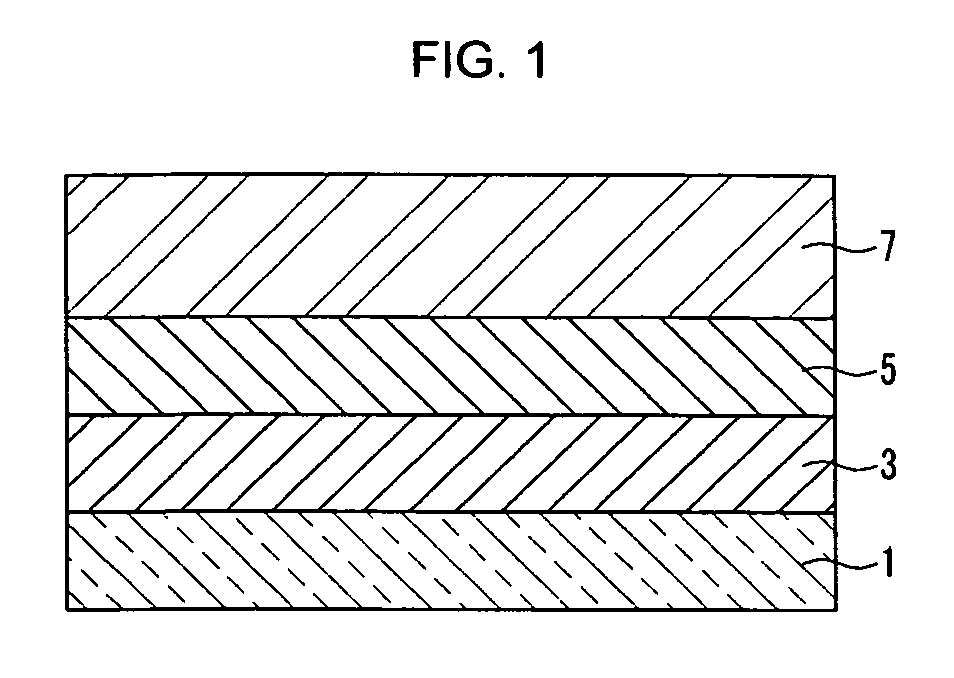Resist underlayer composition and method of manufacturing semiconductor integrated circuit device using the same
a semiconductor integrated circuit and resist layer technology, applied in the direction of photosensitive materials, instruments, photomechanical equipment, etc., can solve the problems of resist materials not having sufficient resistance to the subsequent etching process, poor etch selectivity of anti-reflective coating materials, and semiconductor fabrication processes that require delicate control of optical characteristics, etc., to achieve excellent anti-reflective characteristics
- Summary
- Abstract
- Description
- Claims
- Application Information
AI Technical Summary
Benefits of technology
Problems solved by technology
Method used
Image
Examples
example 1
[0115]122 g of bis(triethoxysilyl)biphenyl (BBP), 451 g of bis(triethoxysilyl)ethane (BE), 25 g of phenyltrimethoxysilane (PT), and 120 g of methyltrimethoxysilane (MT) were put into a 3 l 4-neck flask including a mechanical agitator, a condenser, a dropping funnel, and a nitrogen gas introduction tube, and dissolved in 1800 g of PGMEA. Then, 200 g of a 5000 ppm nitric acid aqueous solution was added thereto. Subsequently, the solution was reacted at about 80° C. for about 3 days. After the reaction, an organosilane polymer B1 (weight average molecular weight=7000, polydispersity (PD)=3) was acquired.
[0116]Subsequent processes, except for the process of acquiring the organosilane polymer, were performed the same as Comparative Example 1.
example 2
[0117]217 g of bis(triethoxysilyl)biphenyl (BBP), 403 g of bis(triethoxysilyl)ethane (BE), 23 g of phenyltrimethoxysilane (PT), and 77 g of methyltrimethoxysilane (MT) were put into a 3 l 4-neck flask including a mechanical agitator, a condenser, a dropping funnel, and a nitrogen gas introduction tube, and dissolved in 1800 g of PGMEA. Then, 250 g of a 5000 ppm nitric acid aqueous solution was added thereto. Subsequently, the solution was reacted at about 80° C. for about 5 days. After the reaction, an organosilane polymer B2 (weight average molecular weight=9700, polydispersity (PD)=4) was acquired.
[0118]Subsequent processes, except for the process of acquiring the organosilane polymer, were performed the same as Comparative Example 1.
example 3
[0119]176 g of bis(triethoxysilyl)biphenyl (BBP), 326 g of bis(triethoxysilyl)ethane (BE), 73 g of phenyltrimethoxysilane (PT), and 25 g of methyltrimethoxysilane (MT) were put into a 3 l 4-neck flask including a mechanical agitator, a condenser, a dropping funnel, and a nitrogen gas introduction tube, and dissolved in 1000 g of PGMEA. Then, 130 g of a 2000 ppm nitric acid aqueous solution was added thereto. Subsequently, the solution was reacted at about 60° C. for about 3 days. After the reaction, an organosilane polymer B3 (weight average molecular weight=7000, polydispersity (PD)=3) was acquired.
[0120]Subsequent processes, except for the process of acquiring the organosilane polymer, were performed the same as Comparative Example 1.
PUM
| Property | Measurement | Unit |
|---|---|---|
| mol % | aaaaa | aaaaa |
| refractive index | aaaaa | aaaaa |
| refractive index | aaaaa | aaaaa |
Abstract
Description
Claims
Application Information
 Login to View More
Login to View More - R&D
- Intellectual Property
- Life Sciences
- Materials
- Tech Scout
- Unparalleled Data Quality
- Higher Quality Content
- 60% Fewer Hallucinations
Browse by: Latest US Patents, China's latest patents, Technical Efficacy Thesaurus, Application Domain, Technology Topic, Popular Technical Reports.
© 2025 PatSnap. All rights reserved.Legal|Privacy policy|Modern Slavery Act Transparency Statement|Sitemap|About US| Contact US: help@patsnap.com


